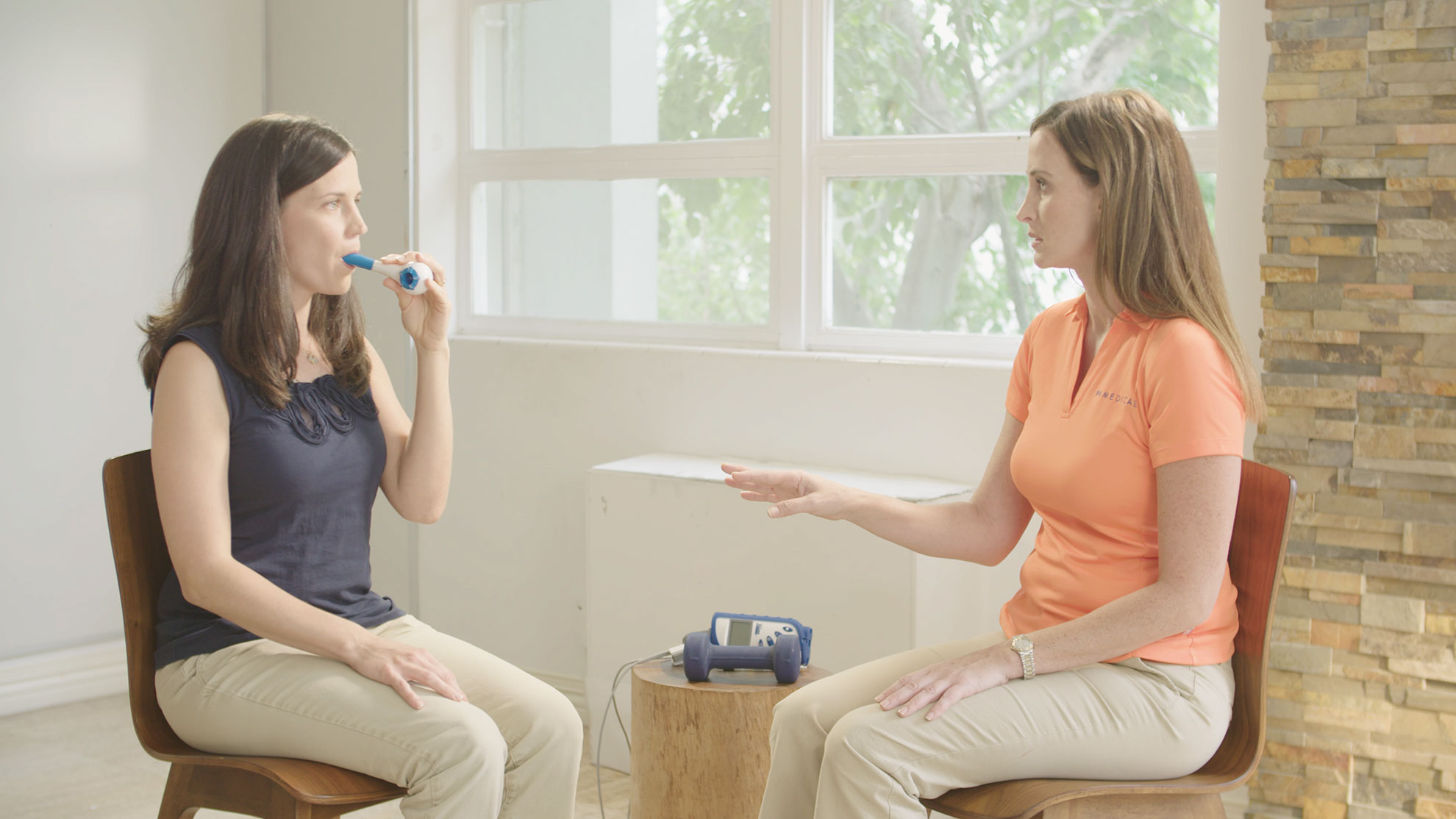In this blog post, we’re going to talk about a study that attempts to address the aforementioned lack. The research explores a combination of IMT and expiratory muscle training (EMT) in order to determine whether or not there is improvement of respiratory muscle strength, fatigue, quality of life (QOL), self efficacy and functional performance in MS patients.
Key Findings
- Multiple sclerosis (MS) leads to peripheral and respiratory muscle weakness and fatigue.
- 5 weeks of respiratory muscle training (RMT) consisting of combined resistance inspiratory and expiratory muscle training improved respiratory muscle strength, fatigue and quality of life in MS patients.
Patient Impact
RMT effectively improves respiratory muscle strength, fatigue and quality of life in MS patients.
Study Methods
Patients with mild to moderate MS underwent combined progressive resistive IMT plus EMT. This includes tests for the following
- Pulmonary function
- Respiratory muscle strength (PImax and PEmax)
- Exercise capacity (stair climb, 6MWT)
- Fatigue
- QOL
- Self efficacy
- Physical disability scale
The above variables were assessed before and after five weeks of respiratory muscle training (RMT), and the results were subsequently compared to a control group.
Study Results
PImax, PEmax, fatigue and QOL all significantly improved due to RMT.
Resistive RMT improves respiratory strength in MS patients and reduces fatigue, thus alleviating the disease burden and improving QOL.

0 Comments